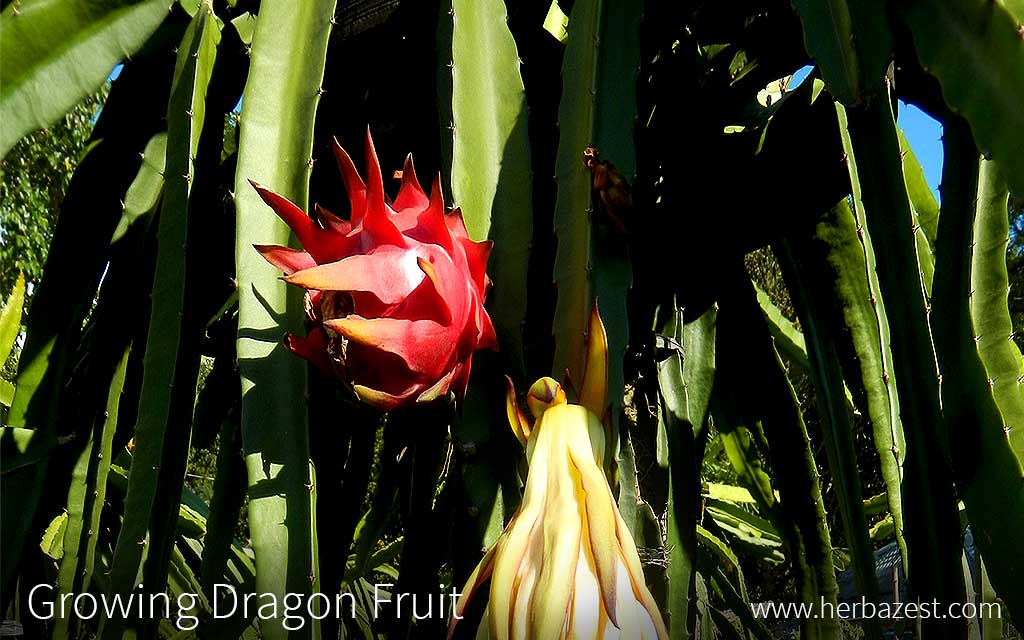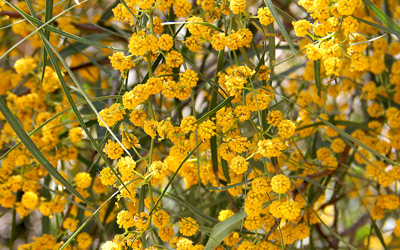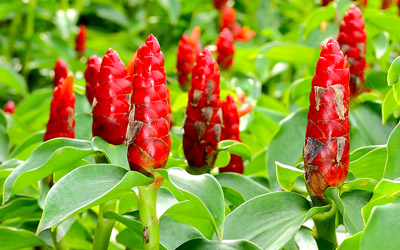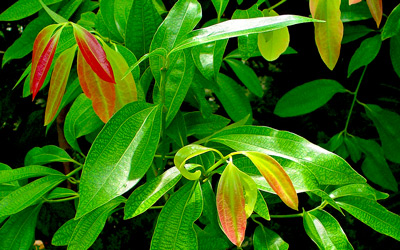Dragon fruit is native to Central and South America. Warm temperatures, support systems, soil quality, and plenty of water are just some of the factors that influence its growth patterns. Following these growing guidelines will ensure a successful cultivation of this showy and delicious fruit.
1. Preparing the Soil
Dragon fruit grows best in well-drained, sandy loam soil that is high in organic matter and also slightly acidic. The plant can stand some salt in the soil, but the extent of the tolerance will depend on the cultivar.
As other cacti species, dragon fruit occupy much less surface area than plants with true leaves, and it is able to survive in arid environments that would kill most plant species. The planting area for dragon fruit does not require a lot of preparation; it would be sufficient with removing weeds and debris, as well as adding some manure into the soil in order to provide nutrients and help with moisture retention.
2. Planting
Planting Dragon Fruit Outdoors
Dragon fruit plants require a warm, moist climate to grow to their fullest potential. An ideal site for planting them should be away from trees, buildings, and power lines. The area should be sunny but a little shaded so that the plants can grow protected from intense sunlight and extremely high temperatures, which shouldn't exceed 102°F (38°C). The best temperatures for growing dragon fruit plants are in the range of 65 - 77°F (18 -25°C). They are able to endure brief exposure to freezing temperatures and recuperate rapidly.
These climbing cacti require either natural or artificial supports or fences. Holes for planting the seedlings or cuttings should be about 12 inches (30 cm) deep and eight inches (20 cm) wide near the support. The supporting post should be anchored at the center of the hole. If the support is artificial, embed it in concrete to make it firm for the vines to climb.
The planting distance depends on the type of support. With vertical supports, a 6.5 - 10-foot (2 - 3 m) spacing between planting lines is required, with a capacity of three cuttings per support. With horizontal or inclined supports, the density can be higher, depending on the grower's preferences. The cuttings are normally planted every 20 - 30 inches (50 - 75 cm) around the support.
In order to better manage and prune the crops, vertical supports should be 4.5 - 5.2 feet (1.4 - 1.6 m) tall, while horizontal or inclined supports should be 3.3 - 4.0 feet (1.0 - 1.2 m) tall.
The plant will start producing fruit in the second year after it was planted; full production normally begins after five years.
Planting Dragon Fruit Indoors
Dragon fruits can be propagated by seed, but they are normally propagated by cuttings. The fruiting stage can take up to three years for plants grown from seeds.
Dragon fruit cuttings can be prepared from an entire stem segment or from six-to eight-inch (15 - 20 cm) stem segments. Longer, mature cuttings lead to faster regeneration of new shoots as well as a higher resistance to insects and snail damage. The cuttings should also be treated with a fungicide to prevent diseases. These treated cuttings must to be cured in a dry, cool area for up to a week before planting. To improve rooting, make a cut on the end of the stem that will be inserted in the soil.
Although the cuttings can be grown directly in the field, it is most common to start them off indoors, in a greenhouse or another suitable environment. Depending on growing preferences, rooting hormones can be used in order to help the cacti develop a strong root system in four to six months, during which time they will grow about an inch (3 cm) per day. Similar to the adult cacti, the cuttings should be watered regularly, but not excessively.
Once the cuttings have developed a strong enough root system, they should be carefully transplanted outside. If the cuttings have to be transported long distances, the roots must be wrapped in a moist cloth to prevent loss of moisture. In general, a dragon fruit nursery is started three months before the rainy season.
3. Plant Care
Watering
This climbing cactus originated in tropical rainforests; therefore, it requires plenty of water. Dragon fruit plants need 25 - 50 inches (640 - 1,270 mm) of annual rainfall.
Since the root system is distributed in the top 6 - 12 inches (15 - 30 cm) of the soil, irrigation is important to maintain consistent soil moisture. If the rainfall is well-distributed throughout the year, irrigation may not be necessary.
Maintaining consistent soil moisture is necessary because fruit splitting may occur when the plants are exposed to wet and dry periods during development. However, drenched soil may contribute to flower drop and fruit rot, among other diseases.
Fertilizing
Fertilizing recommendations depend on the region in which the dragon fruit cacti are grown, their growth phase, and other factors. It is important to note that commercial plants grown organically - whether with or without approved fertilizers - reap higher profits than those exposed to inorganic fertilizers.
Pruning
Dragon fruit plants grow quickly and form a thick, dense mass of vines on top of the support. Any lateral branches should be pruned when they grow toward the support. Only the outer leader vines should be allowed to grow.
Excess dead and diseased stems should also be removed in order to promote only healthy and vigorous stems.
Weed Control
Weed growth can be controlled by growing suitable crops in the spaces between the rows if possible. This practice of intercropping not only covers the soil, thus protecting it, but also helps it to retain moisture. It should be noted that, if not eradicated during their early growth stages, creeping weeds can entangle with the vines, making their removal very difficult.
4. Pest & Disease Control
There are very few insects and diseases that damage dragon fruit vines. However, learning how to identify them will make the growing process simpler.
Pests
For the most part, the dragon fruit plant is free of severe insect pests. However, minor ones can be monitored and controlled regularly, including ants, slugs, beetles, termites, and fruit flies.
Diseases
There are few diseases known to affect dragon fruit vines. Stem rot caused by Xanthomonas campestris and brown spots on the fruit caused by Dothiorella have been reported in Australia and Central America.
In order to reduce disease problems and improve air circulation throughout the cacti rows, as well as to increase light penetration, space the plants out wider.
Wildlife
Besides pests and diseases, local wildlife could also pose a threat to the dragon fruit plant. The presence and damage done by animals such as bats, rats, and birds should be monitored closely with precautionary.
5. Harvest
Dragon fruits are fully developed and can be harvested 30 - 50 days after fruit set. They will continue to mature after being harvested with no noticeable change in sugar content. When ripening, the skin color changes from green to red or rosy-pink.
The fruits are removed from the plants using pruning clippers, since twisting the fruit off often damages its skin. Dragon fruits should be carefully handled during processing and storage.
Fresh dragon fruit is usually sold between June and September; however, August and September are the peak months for most varieties.
6. Storage
Forced cooling after harvesting helps dragon fruits retain their quality. For the fresh fruit market, dragon fruits should be stored at 59 - 68°F (15 - 20°C). However, it is possible for dragon fruits to be stored up to 45 days at 45 - 50°F (7 - 10°C) with a relative humidity of 90 - 98%. When grown for overseas export, dragon fruits will retain their quality for 25 - 30 days at 46°F (8°C).
When the fruits are moved in and out of cold storage, shelf life is drastically reduced. As the skin becomes thinner, the dragon fruit will develop higher sugar levels and a less flavorful taste.
Dragon fruit pulp can be frozen and preserved for a long time.
Growing dragon fruit plants takes time and patience. However, each growth phase contributes to one's overall knowledge of how to cultivate this exotic fruit at home and brings bountiful rewards.





